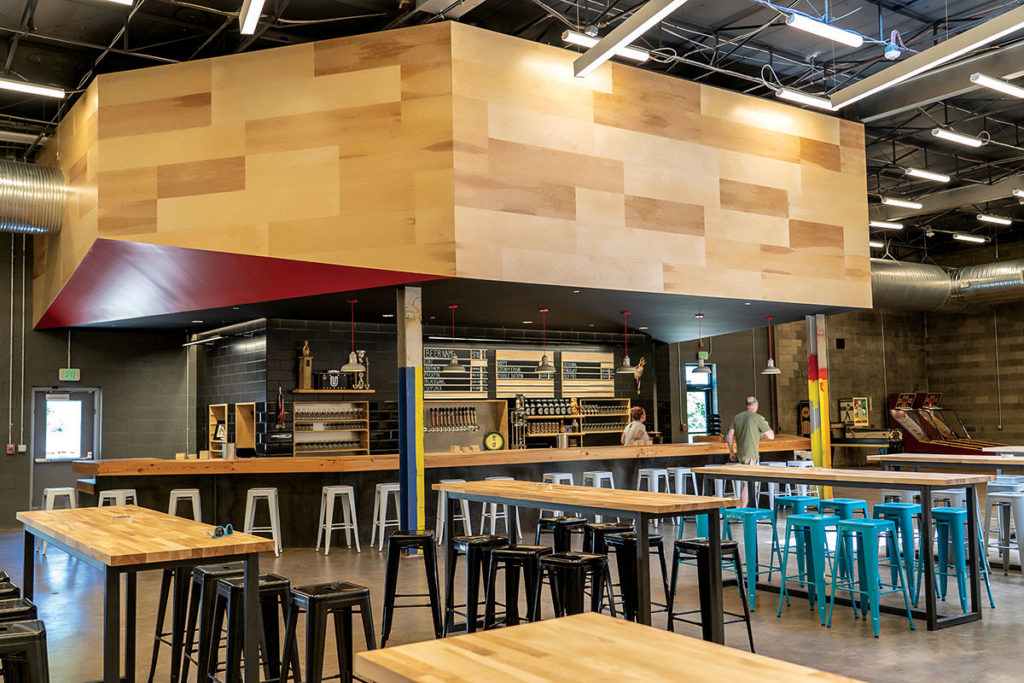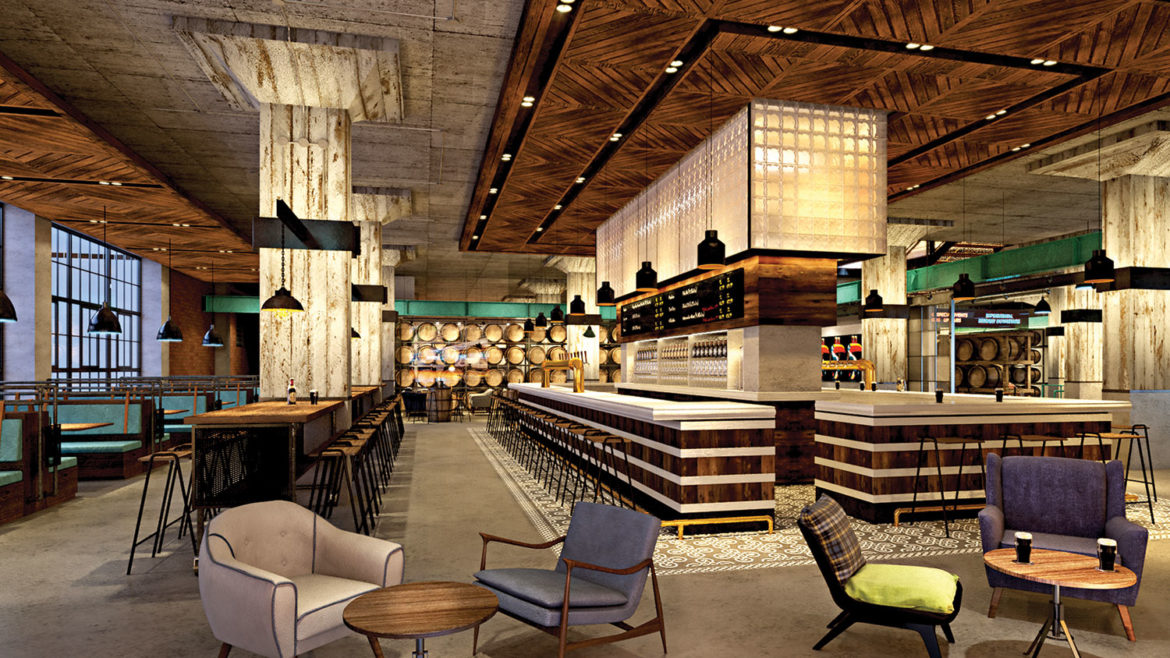By Kate Masters
Drinking a beer at the new Union taproom should be an immersive experience, said Adam Benesch, a founder of Union Craft Brewing in Baltimore. The brewery’s new facility — which opened to the public in June — has a much larger taproom overlooking the brewing operation, where customers can enjoy their favorite beers basking in the glint of Union’s new 60-barrel brewing system.
In addition to the new taproom, the 43,000- square-foot space includes an outdoor beer garden and room for special events. The brewery is part of the new Union Collective — a huge former warehouse, conveniently located less than a mile from Union’s original site, with room for eight other businesses to set up brick-and-mortar stores.
Ambitious? Most definitely. But in the ever-growing world of craft brewing, large-scale expansions have become almost a norm for breweries that succeed in an increasingly crowded landscape. In Laurel, Jailbreak Brewing Company recently opened a new kitchen and expanded its taproom space to 4,500 square feet. Justin Bonner, Jailbreak’s co-owner and CEO, is equally excited about the company’s new brewing facility exclusively dedicated to sour beers.
Fans of the brewing giant Guinness are also breathlessly following the company’s planned expansion in Halethorpe, just outside Baltimore city lines. In October 2017, the corporation opened a “test taproom” within walking distance of its soon-to-be-opened brewery and on-site restaurant.
As of April, around 30,000 people had already visited the smaller space, which gives the company a chance to build excitement and introduce smaller, more experimental batches of beer, said marketing manager Oliver Gray.
“For us, it’s kind of personalizing things and showing people all this great stuff,” Gray said. “Meanwhile, it’s been giving us a chance to build credibility with our neighbors and some of our fellow brewers around the state.”

Union Craft Brewing’s new taproom, above and below, opened to the public in June.
To a large extent, brewery expansions are a way to build barrel capacity and allow the most successful local brewers to fill growing demand for their product.
Even in the world of craft brewing, the vast majority of beer is still sold through retail stores, said Kevin Atticks, executive director of the Brewers Association of Maryland. So, while investing more in brewing infrastructure can be a gambit for business owners, it can also allow them to expand into a statewide or regionally recognized brand.
At the same time, breweries are also factoring the taproom experience into their plans for expansion. Union, Jailbreak and Guinness have all made sizable investments in more capacious taprooms with space for added perks, including restaurants, food trucks and the like.
Emphasizing taprooms has been an industry trend for the past decade, Atticks said, but some brewers say that it’s heightened even within the past couple of years. With more and more consumers focused on the how of drinking — the process of moving beer from barrel to bottle — brewery visits are the single best way to connect with customers and promote a brand.
“We just don’t have the ability to touch each and every one of our consumers at every location where we distribute,” Bonner said. “So, if you really want to know what Jailbreak is, you can visit the taproom. That’s how we connect with people.”
“Our goal is to grow in general, including the taproom,” said Benesch. “Mostly to create a good experience for people. So, if you’re at the store figuring out which six-pack to purchase, you can think back to that experience and that can help inform your decision.”
Jailbreak even decided to move forward with its kitchen after tabling plans to expand distribution into new territories, Bonner said. The company’s sour beer facility will increase production slightly, but the brewery is now looking to expand in other ways, searching out locations for smaller brewing facilities and taprooms in Northern Virginia.
“Early on, you’re just looking to fill out your production, and I think a lot of breweries make the mistake of being impatient,” Bonner said. “You’re making more beer than you can sell, and the first impulse is to open in new territories.”
With expansion, though, comes the need to invest significantly in infrastructure to supply those new areas, Bonner added.
Jailbreak decided to focus instead on building a restaurant and switching to a brewpub license, expanding production only in the areas where it had already been successful.
“If anything, we’re patient and we’re fiscally conservative,” he said. “Yeah, the majority of our revenue comes from distribution. But I think for us, the best margins are in our taproom.”

